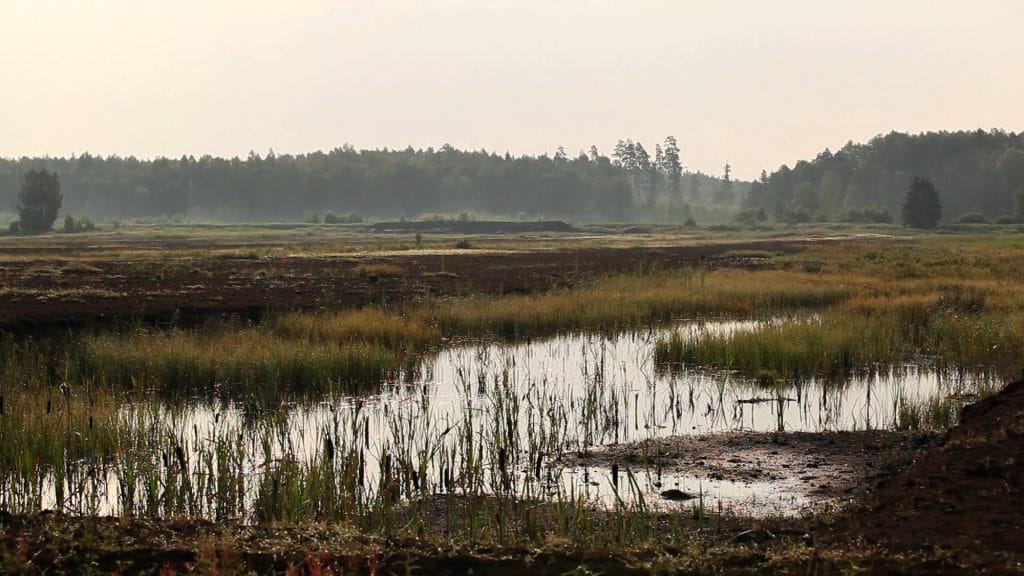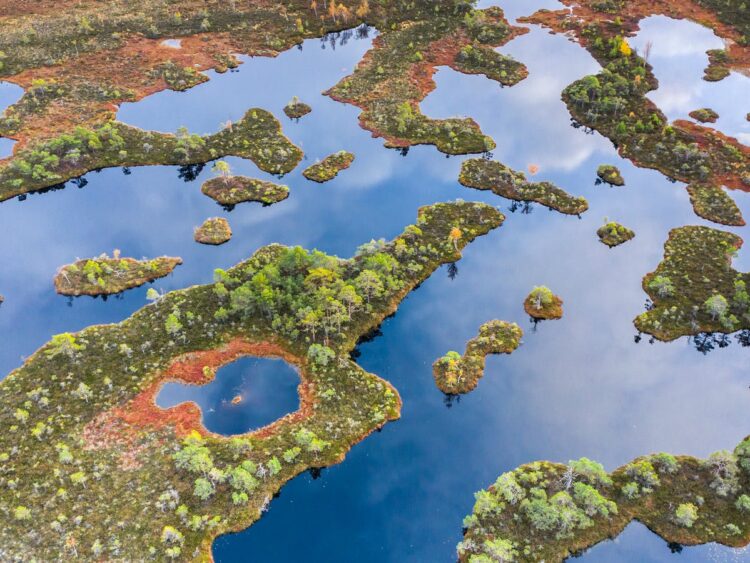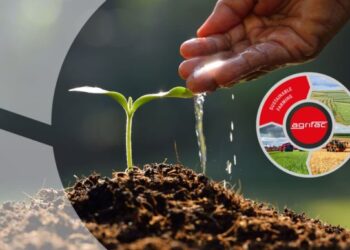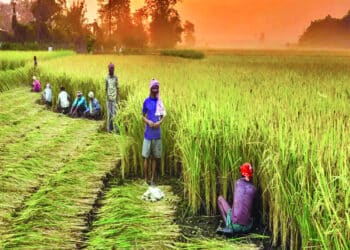- According to the International Peatland Society, Peatlands are a significant part of the environment constituting the wetland ecosystem.
- In 2016, an IUCN resolution was taken in support of the mandates of the FAO by the name of ‘Securing the future for global peatlands’. It strongly emphasizes strategic maneuver to uplift the condition of the Peats. The resolution further recommends the following steps:
According to the International Peatland Society, Peatlands are a significant part of the environment constituting the wetland ecosystem.
The waterlogged condition helps to restrain the plants from completely decomposing. The residue organic material exceeds the decomposed parts and becomes the peats.
In colder regions, Sphagnum mosses, sedges, and shrubs contribute to form peats while in warmer regions, graminoids and woody vegetation are mostly responsible for forming peats.

Peatlands cover 2.84% area of the earth and are a source of high carbon accumulation, the highest for any terrestrial ecosystem. But the concerning fact is that most of the Peatlands across the world are running dry and if it releases the stored carbon and other greenhouse gases it would just increase global warming and affect the climate.
According to new research reported by the World Economic Forum, the world could have an additional 860 million of carbon dioxide every year by the time we reach 2100. Australia itself released 539 million tonnes in 2019.

To put a halt to this process of drying out, it is important that water and good health are restored in the Peatlands. The protection and rejuvenation of Peatlands is a significant process to undertake in order to have a low carbon-free society and help reduce the climate crisis.
Draining Peatlands also have other consequences including a reduction in the quality of drinking water. International Union for Conservation of Nature (IUCN) also believes that it results in loss of biodiversity.
The international organization, in its issues brief, mentioned that the reducing number of the Bornean Orangutan population by 60% in just a short span of sixty years, and the scientists believe that loss of peat swamps is the most crucial reason behind it.

Immediate action is needed to be taken in order to control this big menace. The steps that are required to be taken at a basic level are to control the changes in the agriculture conversion and by revitalizing the waterlogged conditions for the continuation of the formation of Peat. This will ensure the carbon remains inside the peat and not be released.

The UN Food and Agriculture Organization (FAO) has presented 10 strategic actions in the Mitigation of Climate Change in Agriculture Series in 2012 and these steps are still required to be followed:
- assessing the distribution and state of peatlands
- measuring and reporting emissions from peatlands
- protecting and restoring peatlands with targeted financial support
- stimulating market-based mechanisms to support peatlands
- engaging and supporting local communities
- sharing experience and expertise on peatland conservation, restoration, and improved management.

In 2016, an IUCN resolution was taken in support of the mandates of the FAO by the name of ‘Securing the future for global peatlands’. It strongly emphasizes strategic maneuver to uplift the condition of the Peats. The resolution further recommends the following steps:
- Peatlands should be included along with forests in all the International and significant intergovernmental agreements based on climate change, geodiversity, and biodiversity.
- A moratorium is to be issued against the exploitation of Peats until the legislation is strengthened to have proper protection laws to conserve the Peats. Also Read: Microfinance Loans Are The New Hope For Women In Kolkata
















